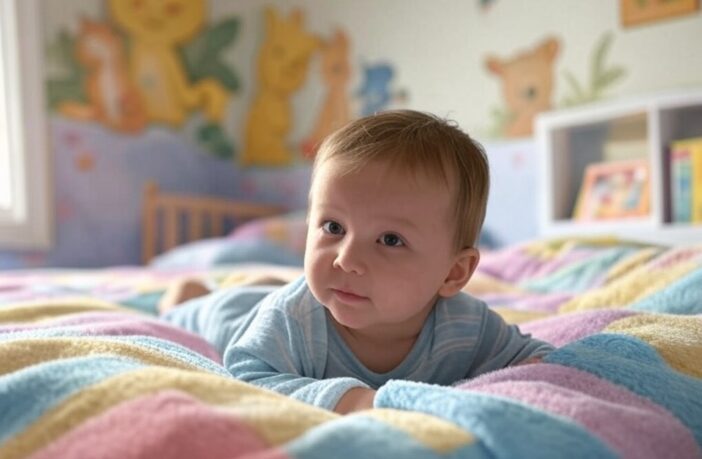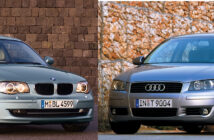Transitioning your child from a crib to a bed is an important milestone. Parents often grapple with choosing between a toddler bed and a twin bed for their growing child. Both options have their merits, and the decision ultimately depends on various factors unique to each family’s situation.
The best choice between a toddler bed and a twin bed depends on your child’s age, size, and your long-term plans. Toddler beds are smaller and lower to the ground, making them ideal for younger children just leaving the crib. Twin beds, on the other hand, offer a long-term sleeping solution that can grow with your child through their teenage years.
Space constraints and budget considerations also play a role in this decision. While toddler beds take up less room, twin beds provide more versatility and can be a more cost-effective choice in the long run. Parents looking to find the perfect kids bed should weigh these factors carefully to make the best choice for their family.
Key Takeaways
- Consider your child’s age, size, and readiness when choosing between a toddler and twin bed
- Toddler beds offer a gentle transition, while twin beds provide long-term value
- Factor in bedroom space and budget when making your decision
Choosing the Right Bed for Your Child
Selecting an appropriate bed for your child involves considering their age, size, safety needs, and room space. The right choice can provide comfort and support their growth for years to come.
Understanding Bed Sizes and Dimensions
Toddler beds typically measure 52 inches long and 28 inches wide, accommodating children up to age 5. These compact beds fit well in smaller rooms and use crib-sized mattresses.
Twin beds offer more space at 75 inches long and 38 inches wide. They’re suitable for children from age 3 through adulthood. Twin beds use standard single mattresses, providing ample room for growth.
Room size plays a crucial role in bed selection. Measure your child’s room to ensure adequate space for the bed and other furniture.
Safety Considerations for Young Sleepers
Toddler beds feature low heights and built-in guardrails, reducing fall risks for young children. These safety features help ease the transition from cribs.
Twin beds can be equipped with removable safety rails for added protection. As children grow, these rails can be removed to suit their changing needs.
Both bed types should have rounded edges and sturdy construction to prevent injuries. Ensure the mattress fits snugly within the bed frame to avoid entrapment hazards.
Growth and Longevity Considerations
Toddler beds serve well for the short term, typically accommodating children until age 5. They’re ideal for easing the crib-to-bed transition but have limited long-term use.
Twin beds offer greater versatility and longevity. They can comfortably fit children from toddlerhood through adolescence and beyond. This makes twin beds a more cost-effective choice for many families.
Consider your child’s growth rate when choosing. A fast-growing child may quickly outgrow a toddler bed, making a twin bed the more practical option.
Assessing Bed Options Based on Child Needs
Selecting the right bed for a child involves considering comfort, space, and budget. Each option offers unique advantages tailored to different ages and stages of development.
Comparing Comfort and Adaptability
Toddler beds provide a cozy transition from cribs, featuring low heights and safety rails. These beds accommodate crib mattresses, allowing for familiar bedding during the switch. Twin beds offer more space and long-term comfort as children grow.
Convertible cribs can transform into toddler beds, providing a seamless transition. Twin beds come in various styles, including daybeds and bunk beds, adapting to changing room layouts and sleep habits.
Mattress options differ between the two. Toddler beds use crib mattresses, while twin beds offer more diverse choices in firmness and materials to suit individual preferences.
Space Efficiency in Children’s Rooms
Toddler beds are compact, ideal for smaller nurseries or shared rooms. Their dimensions (typically 27″ x 52″) leave more floor space for play areas. Twin beds, measuring 38″ x 75″, require larger room footprints but offer versatility for future use.
Some twin beds include storage options like trundles or drawers, maximizing space efficiency. Bunk beds and loft-style twin beds can also save floor space in shared rooms or when desk areas are needed.
Consider room layout and future needs when choosing. A toddler bed may fit better initially, but a twin bed could be more practical long-term.
Budget and Bedding Costs
Initial costs for toddler beds are often lower than twin beds. However, the need to purchase a new bed later can offset these savings. Twin beds may have higher upfront costs but serve children into adulthood.
Bedding expenses vary. Toddler beds use crib sheets, which parents likely already own. Twin beds require new sheet sets, potentially increasing initial costs. Standard twin sizes offer more affordable and widely available bedding options.
Convertible cribs can be cost-effective, transitioning from crib to toddler bed to full-size bed. This option spreads costs over time and reduces the need for multiple bed purchases.
Conclusion
Choosing between a toddler bed and a twin bed depends on several factors. Parents should consider their child’s age, size, and readiness to transition from a crib. Space constraints and budget also play important roles in the decision.
Toddler beds offer a gentle transition with safety features, while twin beds provide a long-term sleeping solution. Both options have merits, and the best choice will vary based on individual family needs and circumstances.





